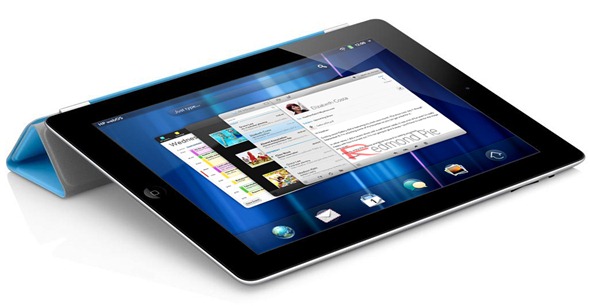Something big's been brewing over in Carlsbad, and the time has finally come for it to be revealed to the world: the Razer Blade. The onyx aluminum beaut before you is the culmination of over three years of work by a stealth team of engineers -- many of them absorbed from the former OQO team. Despite being only 0.88 inches thick (thinner than another 17-incher we know...), the svelte number still packs a punch with a 2.8GHz Core i7-2640M CPU and GeForce GT 555M graphics replete with 2GB of GDDR5 video memory. All that graphical horsepower will splay your exploits on a 17.3-inch LED 1920 x 1080 full HD panel with an HD webcam nestled above. Rounding out the package is 8GB of RAM, three USB ports (one of the 3.0 persuasion), HDMI-out and a 60Wh integrated battery. And it could all be yours for $2,799 when it debuts in Q4 of this year.
That's dandy, but we're more stoked on the 480 x 800 LCD trackpad just to the right of the backlit keyboard. It works either as a multitouch-enabled input device or as an additional display for in-game info when the urge to slay demons with an external mouse strikes. North of that hotness lie ten fully customizable buttons, both in appearance (courtesy of a separate LCD) and in function. The keys and trackpad were last seen on a keyboard in a galaxy far, far away, and are running a custom Switchblade UI -- inspired by the company's oh so sexy Switchblade concept that we saw at CES. And just like the concept, Razer's used a custom lighting panel to ensure you can see those keys clearly from an angle -- people don't look straight down at their keyboards, after all. Follow on past the break for more impressions, video and PR.
Despite only spending brief time with a prototype Blade, we came away mightily impressed with its construction and execution. It's an understated machine with its matte ebony exterior, but the green accents give a hint that this is no ordinary PC. The LCD trackpad and Switchblade keys wowed us once again, but because the Blade was only running a demo loop we couldn't get any impressions of the custom UI. We also can't tell you how deep those tweaks go, but Razer assures us that the soon-to-be-released API allows quite a bit of customization (Engadget key, anyone?). We're looking forward to a more in-depth review once it hits the market, when we'll be able to put it through the ringer. Until then, we can say that while the Blade may not take the fps crown from more potent "portable" gaming laptops, at just seven pounds it can give you some quality gaming cake and let you actually carry it too.











